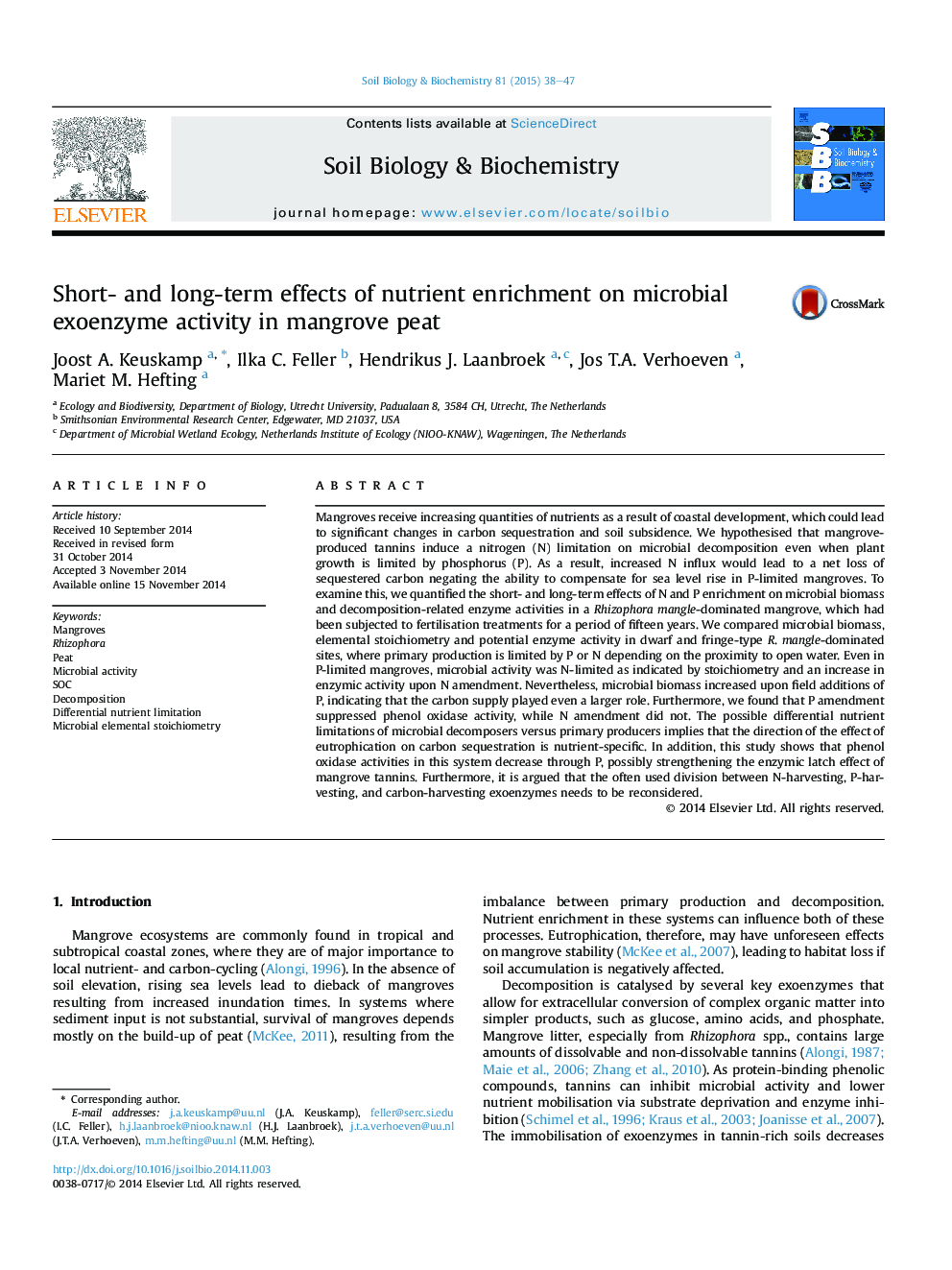| Article ID | Journal | Published Year | Pages | File Type |
|---|---|---|---|---|
| 2024411 | Soil Biology and Biochemistry | 2015 | 10 Pages |
•Mangrove derived tannins induce nitrogen limitation in soil microorganisms.•In P-limited systems, P-amendment can decrease soil organic carbon decay.•Liebigs' Law of the minimum does not apply to microbial decomposers.•Classification of exoenzymes as N, P, and C-harvesting needs reconsideration.
Mangroves receive increasing quantities of nutrients as a result of coastal development, which could lead to significant changes in carbon sequestration and soil subsidence. We hypothesised that mangrove-produced tannins induce a nitrogen (N) limitation on microbial decomposition even when plant growth is limited by phosphorus (P). As a result, increased N influx would lead to a net loss of sequestered carbon negating the ability to compensate for sea level rise in P-limited mangroves. To examine this, we quantified the short- and long-term effects of N and P enrichment on microbial biomass and decomposition-related enzyme activities in a Rhizophora mangle-dominated mangrove, which had been subjected to fertilisation treatments for a period of fifteen years. We compared microbial biomass, elemental stoichiometry and potential enzyme activity in dwarf and fringe-type R. mangle-dominated sites, where primary production is limited by P or N depending on the proximity to open water. Even in P-limited mangroves, microbial activity was N-limited as indicated by stoichiometry and an increase in enzymic activity upon N amendment. Nevertheless, microbial biomass increased upon field additions of P, indicating that the carbon supply played even a larger role. Furthermore, we found that P amendment suppressed phenol oxidase activity, while N amendment did not. The possible differential nutrient limitations of microbial decomposers versus primary producers implies that the direction of the effect of eutrophication on carbon sequestration is nutrient-specific. In addition, this study shows that phenol oxidase activities in this system decrease through P, possibly strengthening the enzymic latch effect of mangrove tannins. Furthermore, it is argued that the often used division between N-harvesting, P-harvesting, and carbon-harvesting exoenzymes needs to be reconsidered.
